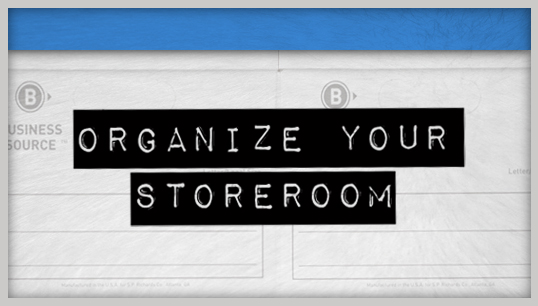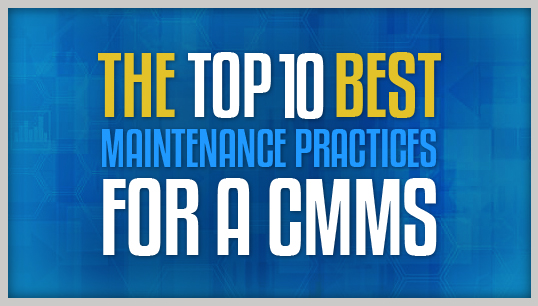Best Practices for Managing Your Maintenance Storeroom
In this Best Practices Webinar, explore how to eliminate data entry and duplicate data with barcoding, integrate storeroom inventory into CMMS software and more.

In this Best Practices Webinar, explore how to eliminate data entry and duplicate data with barcoding, integrate storeroom inventory into CMMS software and more.

In this Best Practices Webinar, we discuss how to achieve the best performance metrics results.

What do you do first when implementing a new CMMS? Here’s our top tips for how to prepare your operations for a CMMS system.

Join world-renowned reliability expert, Dr. Klaus Blache, Director, RMC & Research Professor, University of Tennessee, for a “highlights reel” documenting the history of reliability from past to present. He’ll address current challenges and opportunities as well as delve into the many factors that come into play when trying to implement a reliability strategy. Klaus Blache,…

Motion Amplification is a rapidly evolving technology that is being utilized more and more within maintenance and reliability programs. With new technology comes rapid evolution, new capabilities, and new use cases. In this presentation, we will cover new advances in the technology and how it is being leveraged for full field vibration. Advances include the…

The world is driven by data. MRO data (also known as indirect material data or material master data) is no exception. Asset intensive organizations continuously strive to be more efficient while being cost effective. MRO data remains one of the most untapped sources of savings for procurement, maintenance, and inventory departments within the manufacturing environment….

Unwanted errors & surprises are serious threats to reliability in any high-hazard industry. To address them, many leaders apply a mechanistic approach. They install controls, write procedures, and enforce compliance. But these mechanistic strategies often backfire in adaptive, human-based systems. Learn the difference between Mechanistic and Adaptive Systems See why we can’t “proceduralize everything” in…

Don’t be left in the dark. Alignment processes should include post monitoring to protect the asset and confirm a proper alignment. Elongate the life of your machines with these tips, tricks and technologies from Fluke Reliability alignment experts, Mike Ciocys, Technical Service & Support Manager and Chelsea Fiegel, Service Sales Leader. During this session, we…

In this webinar, John Bernet from Fluke Reliability will discuss best practices for applying root cause analysis and expected failure modes to motor-drive systems. You will learn the simple steps of total condition maintenance, how different inspection techniques from electrical to thermal can help identify different failure modes, and how vibration analysis in particular can…

For every action taken to maintain a piece of equipment, a Failure Mode—or cause of failure—is managed. That is why a Failure Modes and Effects Analysis (FMEA) is an essential part of physical asset management. When done properly, an FMEA helps organizations: 1) Define equipment goals, 2) Identify what could cause Reliability to suffer, and…